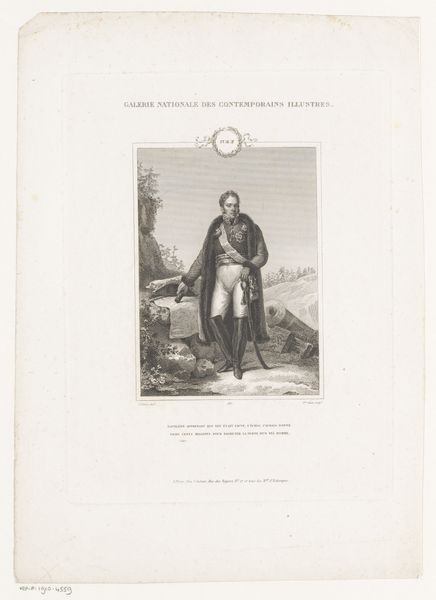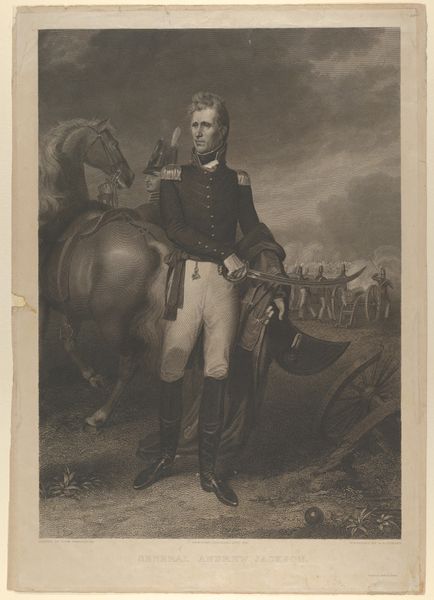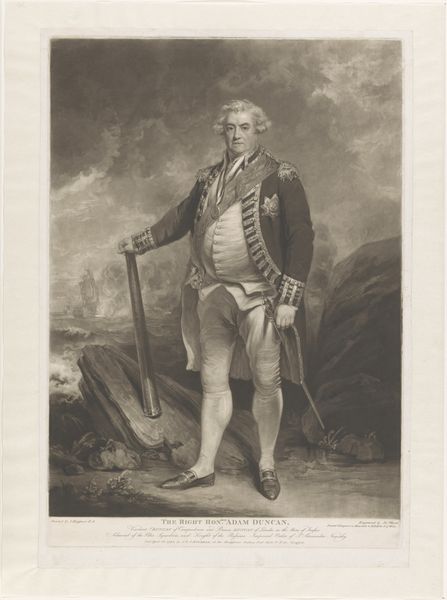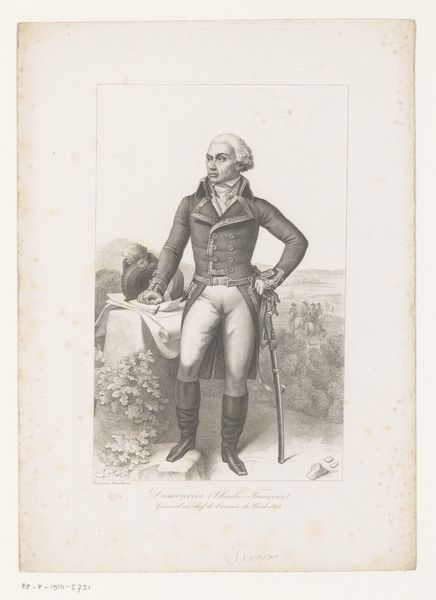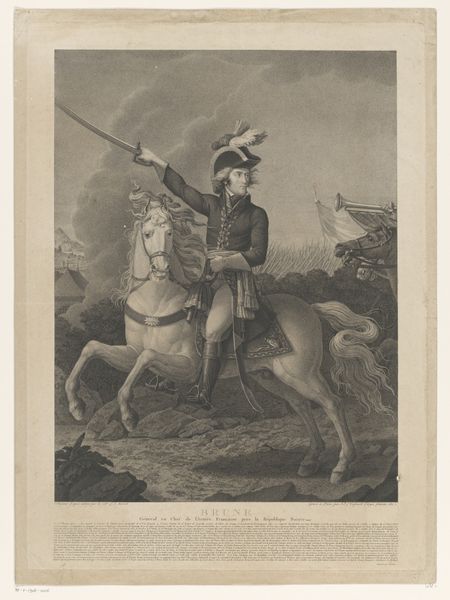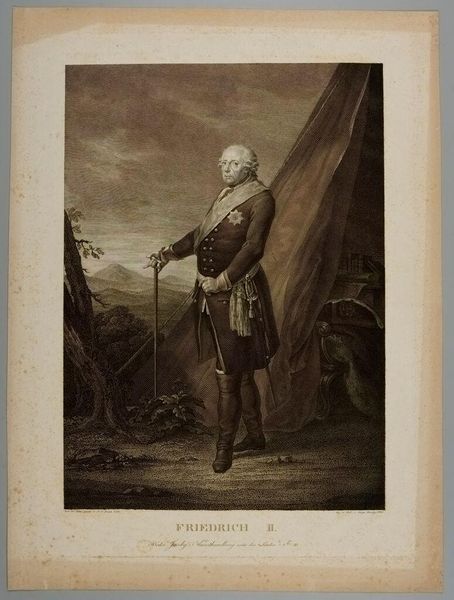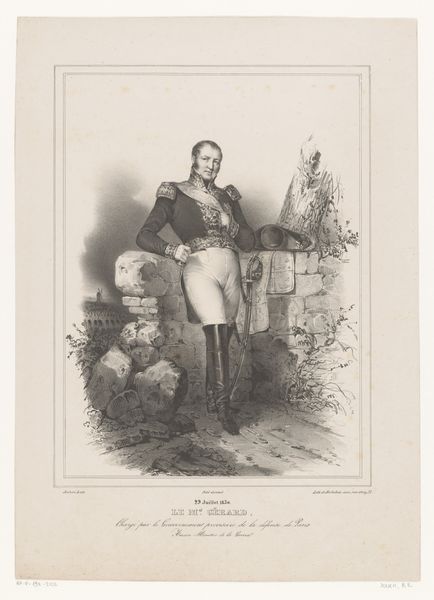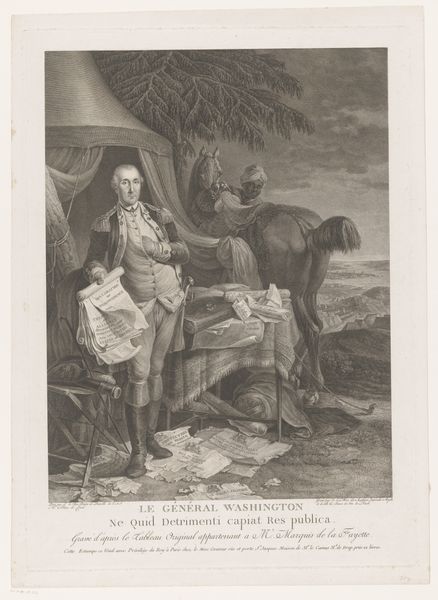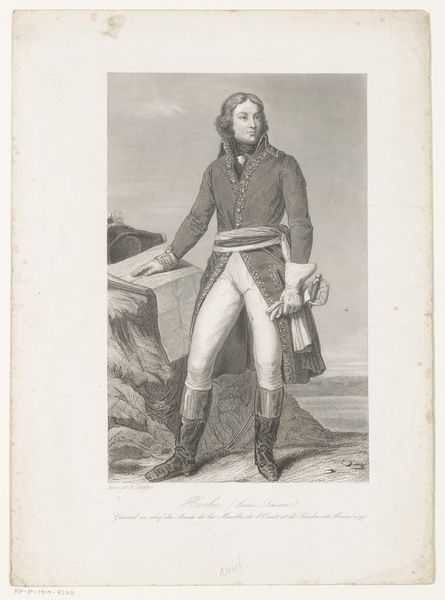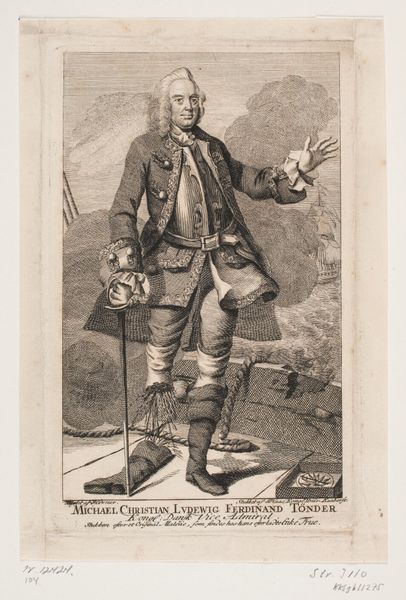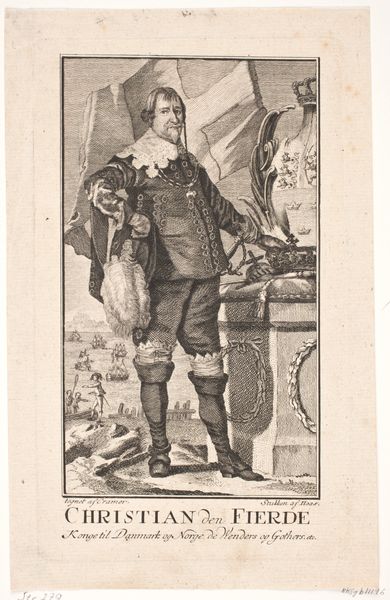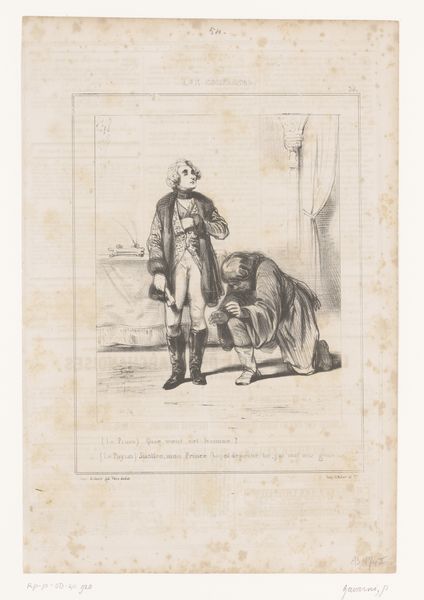
Portret van Willem V op het strand in Scheveningen before 1873
0:00
0:00
Dimensions: height 380 mm, width 285 mm
Copyright: Rijks Museum: Open Domain
Curator: Before us hangs "Portret van Willem V op het strand in Scheveningen," an engraving completed before 1873 by Carel Christiaan Antony Last, currently residing here at the Rijksmuseum. It presents Willem V against a backdrop that is part stately portraiture and part rugged coastline. Editor: It’s rather melancholic, wouldn’t you say? The monochromatic palette, the overcast sky... there’s a definite air of pensiveness about him. Almost a weariness, perhaps, reflecting the burden of leadership during a tumultuous period. Curator: Absolutely. Consider the historical context. Willem V was the last Stadtholder of the Dutch Republic, a period of significant political and social upheaval. The looming French Revolution casts a long shadow here. It’s important to note the imagery deployed places him, the landscape, and the sea in relation to Dutch national identity in times of instability. Editor: The choice of Scheveningen is interesting, too. Not some grand palace, but a seaside location popular with ordinary people, perhaps meant to humanize him, connect him to the nation? Yet his pose, holding the hat, has that sense of longing as he is gazing out at the sea. This connects Willem with a global trade controlled by men but funded and administrated by women from the shore, looking for ships and sons coming home. Curator: Exactly! The work serves as a political statement, negotiating between aristocratic dignity and a strategic display of connection with his subjects. By being a man from the sea, it implies an economic connection. He literally wears an aristocratic order but it appears as if its weighing him down as the ocean breeze picks up around him. Editor: And those ships sailing behind him become a silent chorus of history. There's a narrative there, suggesting trade, commerce, power, even perhaps exodus and colonization of far-flung shores. A complicated history hangs within that very small etching. Curator: Yes, the technique further enhances the nuanced effect. The fineness of the engraving lends itself to both a realism and an ethereal quality to the print as it exists as both an object in the domestic sphere, and on a museum wall. Editor: Looking at it, you can see how seemingly simple images like this carry enormous weight, embodying a time of great change. You also wonder who would commission such a print? Curator: It reminds us that representation, especially of leaders, is always a carefully constructed narrative. The act of representing a person such as Willem here can be deeply affected by factors like access to public memory and financial security in retirement. Editor: It is a good reminder of how much the weight of the sea can change a person, an entire country, or a narrative.
Comments
No comments
Be the first to comment and join the conversation on the ultimate creative platform.
